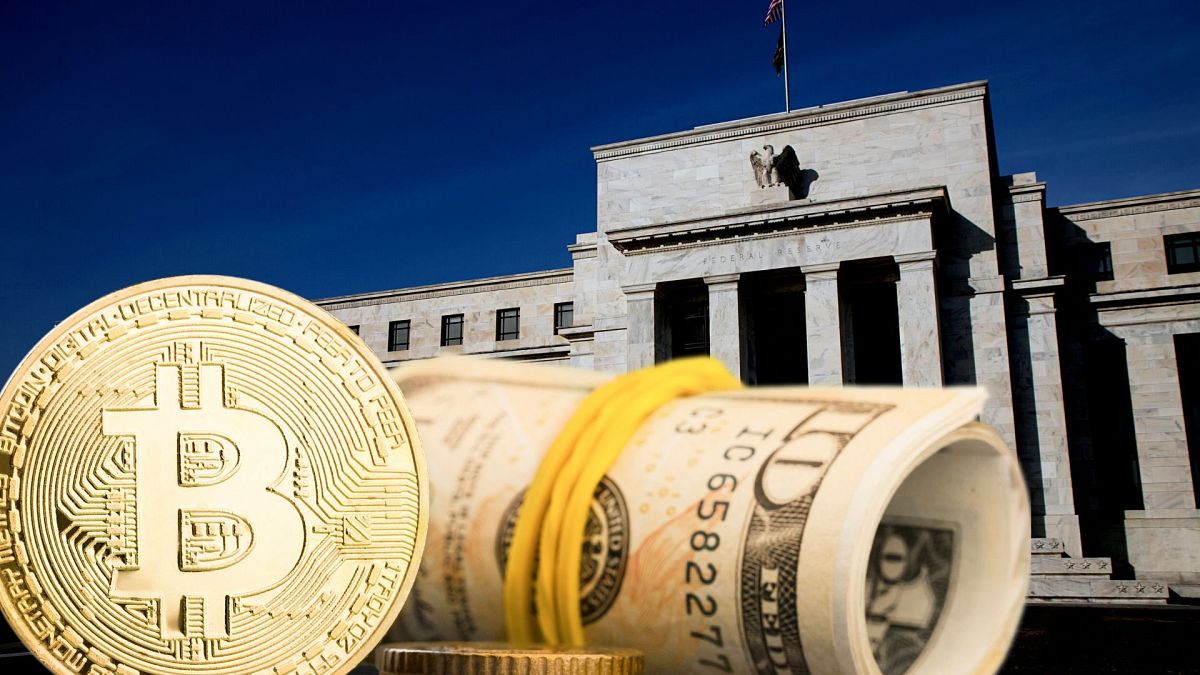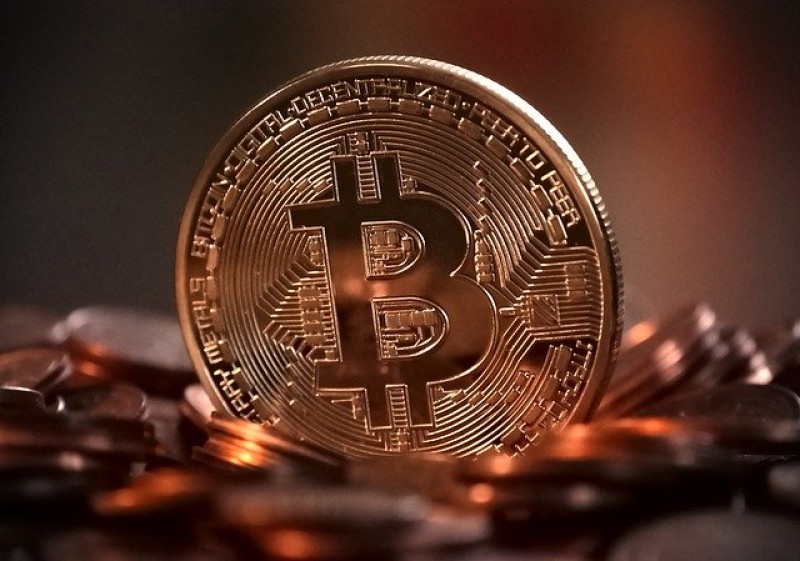Introduction
In March 2025, President Donald Trump signed an executive order establishing the Strategic Bitcoin Reserve and the U.S. Digital Asset Stockpile, marking a pivotal moment for cryptocurrency in U.S. financial policy. This initiative integrates Bitcoin (BTC), Ethereum (ETH), Ripple (XRP), Solana (SOL), and Cardano (ADA) into a national reserve framework, signaling a shift toward institutional acceptance of digital assets. This development is being viewed as a significant step toward the institutionalization of the Crypto Reserve. The move has sparked market surges, regulatory clarity, and renewed interest in blockchain technology. But who truly benefits from this policy, and which cryptocurrencies are most impacted? Let’s break it down.
Key Cryptocurrencies Benefiting from the U.S. Crypto Reserve
The inclusion of specific cryptocurrencies in the U.S. Digital Asset Stockpile elevates their status, providing a government-backed stamp of legitimacy. Here’s how the selected coins stand to gain:
1. Bitcoin (BTC) – The Anchor Asset
Bitcoin emerges as the primary beneficiary, solidified as the centerpiece of the Strategic Bitcoin Reserve.
- Reduced Supply Pressure: The U.S. government’s decision to hold seized Bitcoin—estimated at 200,000 BTC worth over $17 billion as of March 2025—prevents these assets from being sold off, which historically depressed prices. This retention could tighten supply, driving demand.
- Institutional Confidence: Bitcoin’s designation as a strategic asset positions it as “digital gold,” reinforcing its role as an inflation hedge and store of value, likely encouraging hedge funds, banks, and sovereign wealth funds to increase allocations.
- Long-Term Stability: Analysts like Geoff Kendrick from Standard Chartered predict Bitcoin could reach $500,000 before Trump’s term ends, reflecting optimism about its role in the reserve.
2. Ethereum (ETH) – A Boost for DeFi and Scalability
Ethereum’s inclusion in the Digital Asset Stockpile enhances its credibility, particularly for institutional adoption.
- DeFi and Smart Contracts: ETH’s smart contract capabilities make it a cornerstone of decentralized finance (DeFi), and government recognition could spur enterprise adoption in areas like tokenized assets and supply chain management.
- Layer 2 Growth: Ethereum Layer 2 solutions, such as those used by projects like Peanut Unbound ($PUBD), may see increased interest as government-backed initiatives explore scalable blockchain applications.
- Regulatory Clarity: A friendlier regulatory stance under Trump’s administration, including the SEC dismissing lawsuits against platforms like Coinbase, reduces barriers for Ethereum-based projects.
3. Ripple (XRP) – A Win for Cross-Border Finance
XRP’s inclusion marks a significant turnaround after years of regulatory challenges with the SEC.
- Regulatory Shift: The government’s endorsement could resolve lingering uncertainties, encouraging Ripple’s partnerships with financial institutions for cross-border payments.
- Market Impact: XRP saw a 30% price surge following Trump’s announcement, reflecting market optimism about its role in global finance.
- Adoption Potential: With the U.S. supporting XRP, its use in remittances and international transactions could accelerate, benefiting Ripple and its ecosystem.
4. Solana (SOL) – High-Speed Blockchain Gains Traction
Solana’s recognition in the stockpile highlights its potential as a high-performance blockchain.
- Scalability Advantage: SOL’s ability to handle thousands of transactions per second with low fees makes it attractive for government-backed projects, especially in areas like NFT marketplaces and gaming.
- Developer Interest: Increased regulatory clarity could draw more developers to Solana, as seen with its stablecoin activity surpassing $10 billion, where USDC holds nearly 80% of the share.
- Institutional Appeal: Solana’s inclusion may reduce perceived risks, encouraging institutional investment in SOL-based applications.
5. Cardano (ADA) – Sustainability Meets Innovation
Cardano’s energy-efficient design and research-driven approach align with government interests in sustainable blockchain solutions.
- Eco-Friendly Appeal: ADA’s proof-of-stake (PoS) mechanism, consuming 99% less energy than Bitcoin’s proof-of-work, makes it a candidate for environmentally conscious initiatives.
- DeFi Growth: Cardano’s expanding DeFi ecosystem could attract public-private partnerships, especially with its focus on scalability and governance.
- Price Surge: ADA experienced a 70% price spike post-announcement, indicating strong market confidence in its future role.
Who Benefits from the U.S. Crypto Reserve?

Beyond the cryptocurrencies themselves, several groups and industries stand to gain from this policy shift:
1. Institutional Investors and Hedge Funds
- Increased Allocations: The government’s endorsement reduces regulatory fears, prompting hedge funds, pension funds, and asset managers to boost crypto investments. Quarterly filings from late 2024 already showed asset managers increasing allocations to U.S. spot Bitcoin ETFs.
- Portfolio Gains: Companies like MicroStrategy, holding significant BTC, and BlackRock, with Ethereum-based ETFs, may see their portfolios appreciate as prices rise.
- DeFi Opportunities: Institutional interest in DeFi could grow, with Ethereum and Solana benefiting from capital inflows into decentralized protocols.
2. Crypto Exchanges and Custodians
- Trading Volume Surge: Platforms like Coinbase, Kraken, and Binance.US are likely to see increased trading activity as retail and institutional investors react to price movements and newfound legitimacy.
- Custody Demand: Regulated custodians will benefit from heightened demand for secure storage solutions, especially for institutional clients entering the market.
- Stablecoin Growth: The reserve’s framework could support stablecoin issuers like Circle (USDC), which recently hit a $60 billion market cap, as regulatory clarity encourages adoption.
3. Blockchain Developers and DeFi Projects
- Innovation Boost: Clearer regulations foster innovation, benefiting developers on Ethereum, Solana, and Cardano. Projects like RabitiAI ($RIAI), with its AI-blockchain integration, could attract more funding.
- Government Projects: The reserve may lead to government-backed blockchain initiatives, creating opportunities for developers in compliance-focused applications.
- Venture Capital: Increased investor confidence could drive venture capital into DeFi and Web3 projects, particularly those on recognized blockchains.
4. Retail Investors and Early Adopters
- Price Appreciation: Long-term holders of BTC, ETH, XRP, SOL, and ADA benefit from price surges, with the total crypto market gaining $300 billion shortly after Trump’s announcement.
- Reduced Fear: Government backing diminishes the “fear factor” for new retail investors, making crypto more mainstream.
- Education Growth: As crypto becomes more accepted, educational initiatives may expand, helping retail investors navigate the market more effectively.
Market Reactions and Future Outlook

The U.S. Crypto Strategic Reserve has already had a significant impact:
- Immediate Market Response: Bitcoin surged to $94,164, Ethereum to $2,516, XRP by 30%, Solana by 20%, and Cardano by 70% following the announcement, though prices later moderated.
- Institutional Reassessment: Traditional finance firms are expanding into crypto, leveraging the regulatory clarity provided by the executive order.
- Altcoin Momentum: Ethereum, XRP, Solana, and Cardano have gained traction, with their ecosystems poised for growth.
Looking ahead:
- Global Influence: Other nations may establish their own crypto reserves, following the U.S. lead, potentially leading to a more coordinated international regulatory framework.
- Blockchain Incentives: Governments might offer grants or partnerships to blockchain projects, accelerating adoption in sectors like finance and logistics.
- Mainstream Integration: Crypto’s role in the financial system could deepen, blurring lines between traditional and digital finance.
- Regulatory Evolution: Further legal frameworks may emerge to support and regulate crypto reserves, shaping the industry’s long-term trajectory.
Critical Perspective: Who Might Not Benefit?
While the reserve offers clear advantages, it’s worth examining potential downsides:
- Bitcoin Maximalists: Some Bitcoin purists, as noted in posts on X, argue that including altcoins dilutes Bitcoin’s status as the premier store of value, calling the reserve a “shitcoin reserve.”
- Smaller Cryptocurrencies: Meme coins like PEPE Ascension ($PEAP) and Peanut Unbound ($PUBD), despite their innovative features, may struggle to compete with the government-backed coins, as investor focus shifts to BTC, ETH, XRP, SOL, and ADA.
- Taxpayer Concerns: Critics like Mark Zandi from Moody’s Analytics argue that the reserve’s reliance on volatile assets risks taxpayer money, especially if the market crashes.
- Regulatory Risks: While the current administration is pro-crypto, an executive order can be reversed by future presidents, introducing uncertainty absent congressional backing.
Conclusion
The U.S. Crypto Strategic Reserve is a landmark step toward mainstream crypto adoption, with Bitcoin, Ethereum, XRP, Solana, and Cardano emerging as the primary beneficiaries due to their inclusion in the stockpile. Institutional investors, crypto exchanges, blockchain developers, and retail investors all stand to gain from increased legitimacy, market growth, and regulatory clarity. However, the policy’s long-term success depends on execution, sustained political support, and market stability. As the crypto landscape evolves, this initiative could set a global precedent, but investors and industry players should remain vigilant about potential risks and shifting regulatory dynamics.

